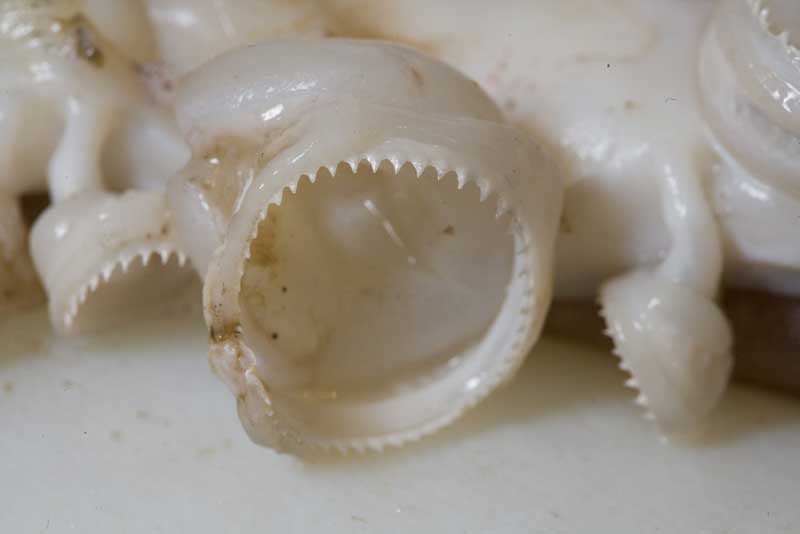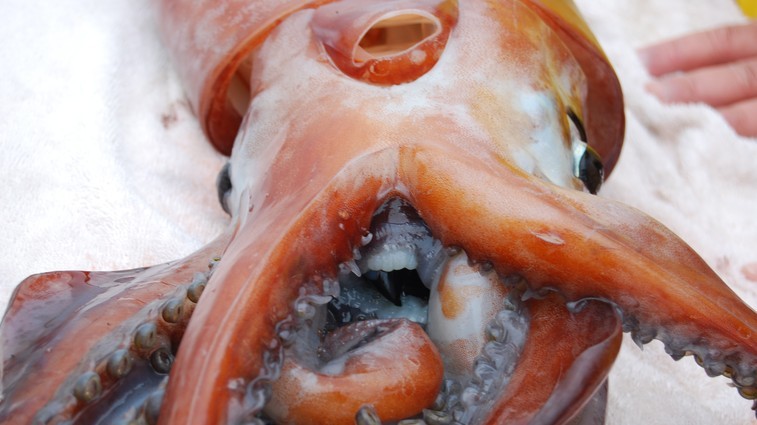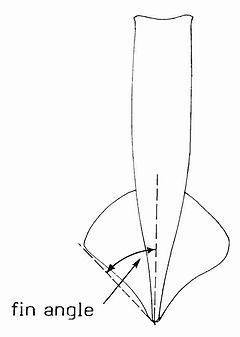
All about
The giant squid's features are probably the most amazing thing about the animal. Giant squids are huge! The biggest one ever weighed almost a ton and was longer than 40 feet. Their Latin name is architheuthis dux. They have two tentacles that can grab a deep sea fish more than 30 feet away. That is as long as 10 yard sticks lined up!
On each of their two tentacles they have a pointy oval covered in hundreds of suckers that have a ring of teeth on them and can still stick after the squid is dead.

Sometimes, the length of the tentacles can be double the size of the rest of the squid's large body. The giant squid has eight arms with many suckers, each two inches wide. Now imagine the giant squid's sucker-covered body changing color.
Like other squids, giant squids can change color. They change color using small sacs of "color" on their body. Their magical color sacs are called chromatophores, (pronounced kroMATahforz). The squid can squeeze the chromatophores (by use of muscle) to change their body color. When excited, squids change their body color to red! Squids "talk" to each other by changing color.
In the middle of the squid's chromatophore-colored body are its eyes. The eyes are the size of soccer balls. These eyes are each about 10 inches in diameter. The 10-inch wide eyes can see better than our eyes, because their retinas are constructed differently than ours.

A giant squid's funnel is between its eyes. The funnel can make the squid shoot through the water, by sucking in water and squirting it out. The squid can also breathe out of the funnel and expel waste. It can also squirt out ink to distract preditors.

Though the outside features of the giant squid are interesting, the inside is also fascinating. A giant squid's mantle is the cone shape at the upper part of the squid's body. On top of the squid's mantle there are the fins that help keep the squid stable while swimming. The mantle contains all the basic organs.

Inside, the mantle has not one, not two, but three hearts! Two of the hearts, the bronchial hearts, are slightly green. The bronchial hearts pump blood with oxygen to the gills. The main heart pumps blood around the body. Scientists are not certain why a squid needs three hearts. The squid might need three hearts because it needs significant power to pump water through its funnel. A squid's blood is blue and is copper-based because it carries oxygen in it.
The squid's brain is also inside the mantle. The brain is small relative to its hugeness. Its brain does not look like a human brain; its brain has a hole in it, like a donut. Its throat goes right through the brain.
Scientists know about what giant squids eat from studying the bodies of giant squids that wash up on shore. They have dissected the squid's stomachs in order to identify what they have recently eaten. Oddly, giant squids are cannibals and eat other giant squids.
A giant squid catches prey with its long tentacles and with its shorter eight arms. Next, the squid eats the fish, biting it with its parrot-like beak. The food is ground up by the radula, a tongue-related organ covered in teeth that replace themselves, just as a shark does.

Regarding repproductiion, a male giant squid uses a reproductive organ that can stick out of its funnel when mating. Other types of male squids use one of their eight arms that can also be used as a reproductive organ. A male giant squid's reproductive organ can be longer than six feet. Male giant squids place sperm packets into the females arms. The next part of the process is mostly unknown, except that after fertilizing the eggs, the female releases millions of tiny eggs into the dark water in an egg mass. An egg mass is a clump of eggs. Only a few of the eggs survive, but the survivors become baby giant squids. The female does not live to see her young. Though scientists have never filmed giant squids reproducing, they have filmed a giant squid in its natural environment.